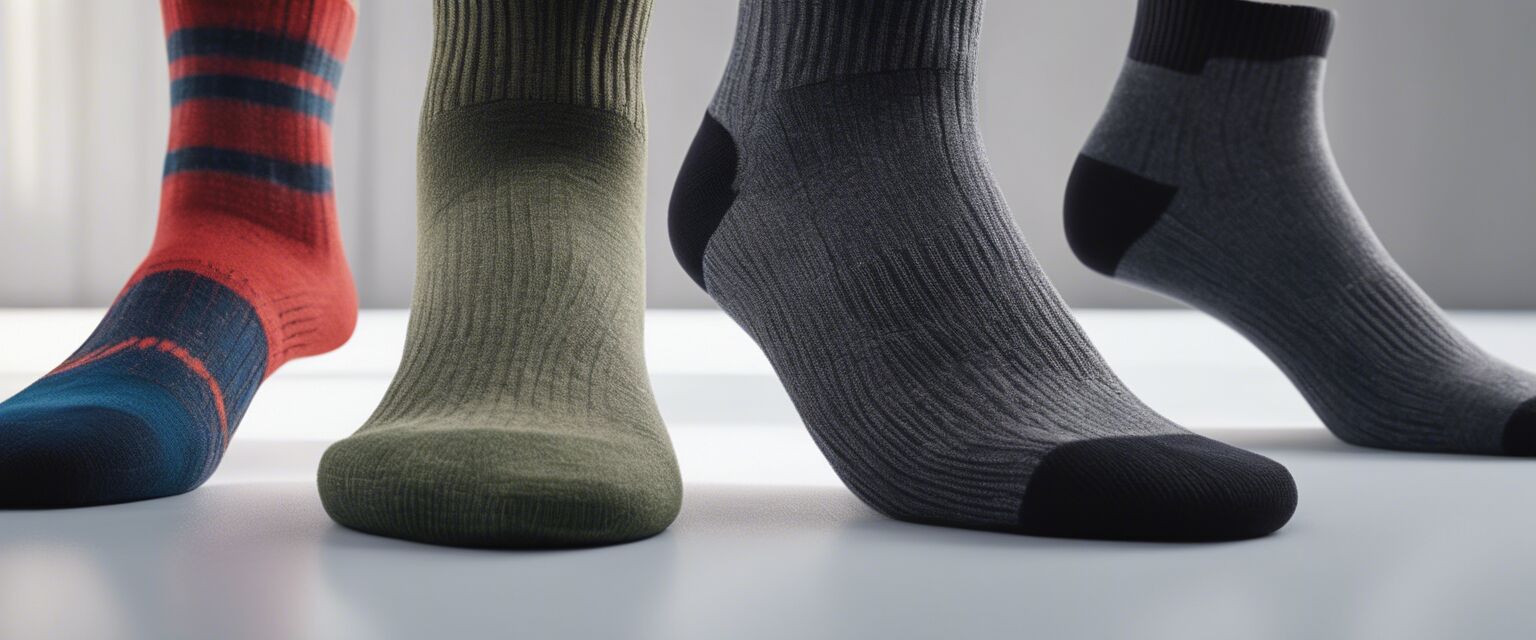
Thermal and Insulated Socks
Key Takeaways
- Thermal and insulated socks are essential for keeping your feet warm in cold weather.
- Materials like wool and synthetic fibers enhance insulation and moisture-wicking properties.
- Choosing the right fit is crucial for comfort and effectiveness.
- Wearing these socks can improve your overall winter outdoor experience.
As the temperature drops, having the right footwear becomes increasingly important. Thermal and insulated socks are designed to keep your feet warm and comfortable during the cold months. In this guide, we will explore the various types, materials, benefits, and tips for selecting the perfect pair of socks for winter weather.
What are thermal and insulated socks?
Thermal and insulated socks are specially designed socks that provide extra warmth and insulation for your feet. They are typically made from materials that trap heat and wick moisture away from the skin, ensuring that your feet stay dry and warm. These socks are perfect for outdoor activities in the winter, such as hiking, skiing, or simply taking a stroll in chilly weather.
Benefits of thermal and insulated socks
- Warmth: The primary benefit is keeping your feet warm in cold temperatures.
- Moisture-wicking: Many thermal socks are designed to wick moisture away, preventing dampness that can lead to cold feet.
- Comfort: With the right fit and material, thermal socks can provide additional cushioning and support.
- Durability: Quality thermal socks are often made to withstand harsh conditions and frequent wear.
Materials used in thermal and insulated socks
Choosing the right material is essential for effective thermal insulation. Here are some common materials used:
| Material | Properties |
|---|---|
| Wool | Excellent insulation and moisture-wicking properties. |
| Thermal synthetic fibers | Lightweight, durable, and quick-drying. |
| Blended fabrics | A mix of natural and synthetic fibers for enhanced comfort and performance. |
Choosing the right thermal socks
When selecting thermal and insulated socks, consider the following:
- Fit: Ensure the socks fit snugly without being too tight.
- Thickness: Choose thickness based on your footwear and activity level.
- Seam placement: Look for socks with flat seams to prevent irritation.
- Height: Decide between crew, knee-high, or ankle-length based on your comfort and activity.
Comparison of thermal and insulated socks
| Type | Best For | Warmth Level | Moisture Management |
|---|---|---|---|
| Wool socks | Outdoor activities | High | Good |
| Thermal synthetic socks | Casual wear | Medium | Excellent |
| Blended fabric socks | Versatile use | Medium to High | Good |
Tips for maintaining thermal and insulated socks
Care tips
- Wash in cold water to preserve insulation.
- Avoid bleach and fabric softeners to maintain material integrity.
- Air dry rather than tumble dry to prevent shrinkage.
- Store in a cool, dry place to avoid mildew.
Popular applications of thermal and insulated socks
These socks are suitable for various activities, including:
- Hiking: Providing warmth and comfort on long trails.
- Skiing: Keeping feet warm during winter sports.
- Everyday wear: Ensuring comfort during daily activities in cold weather.
Where to find thermal and insulated socks
For a wide selection of thermal and insulated socks, check out our categories:
Conclusion
Investing in quality thermal and insulated socks is vital for anyone looking to keep their feet warm and comfortable during the cold months. With various materials, thicknesses, and styles available, you can find the perfect pair to suit your needs. Don't let the winter chill keep you from enjoying your favorite outdoor activities!
Pros
- Exceptional warmth and comfort.
- Moisture-wicking properties keep feet dry.
- Durable and long-lasting materials.
- Available in various styles and thicknesses.
Cons
- Can be more expensive than regular socks.
- Some materials may cause irritation for sensitive skin.
- Not all styles may fit well with every type of footwear.
Additional resources
For more information on related topics, feel free to explore our other product categories:
Frequently Asked Questions
Q: How do I choose the right thermal socks for my needs?
A: Consider the material, thickness, and intended use to find the best fit for your activities.
Q: Can I wear thermal socks with regular shoes?
A: Yes, but make sure the socks fit well within your shoes to avoid discomfort.
Q: How often should I replace my thermal socks?
A: It depends on usage, but generally, if they show signs of wear or loss of insulation, it's time to replace them.











